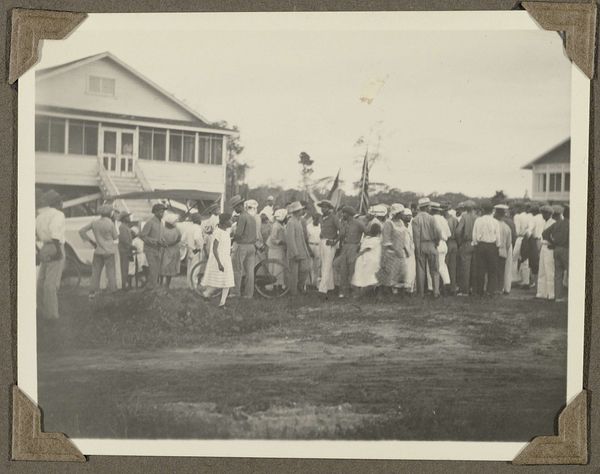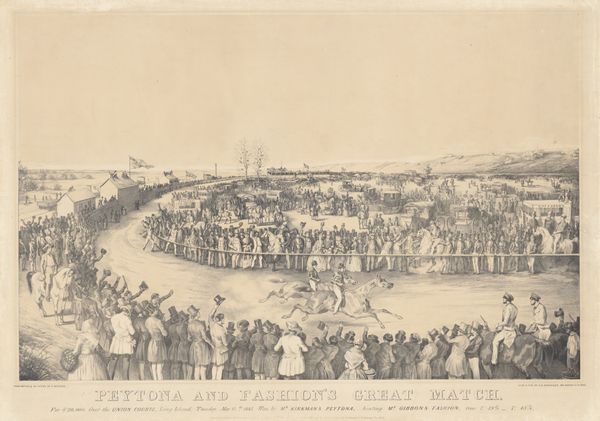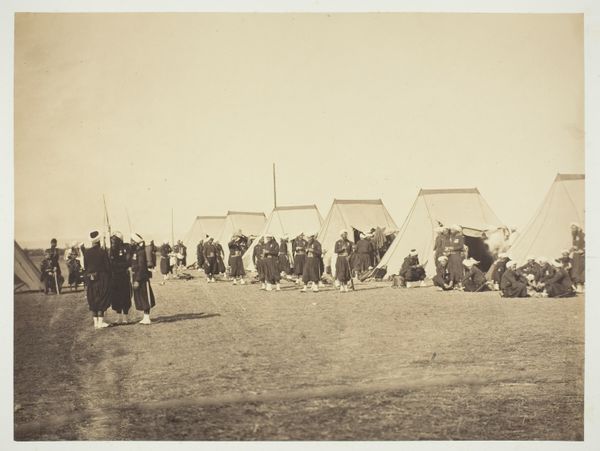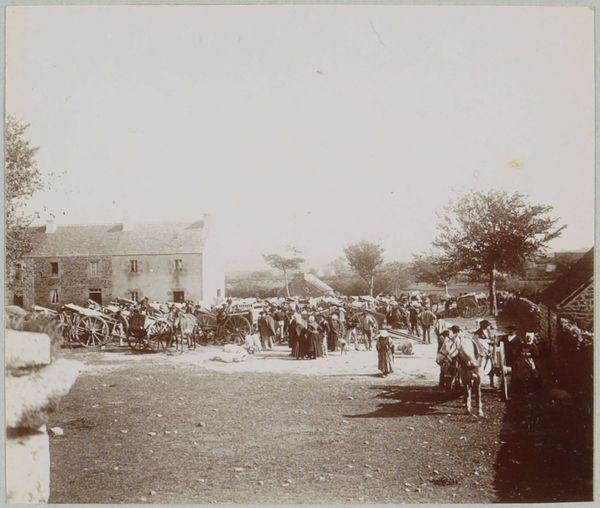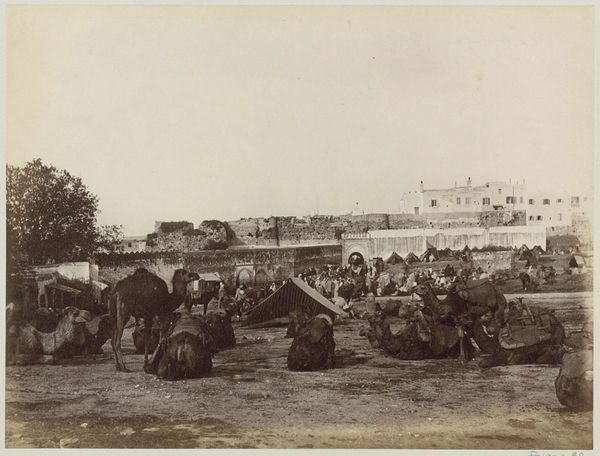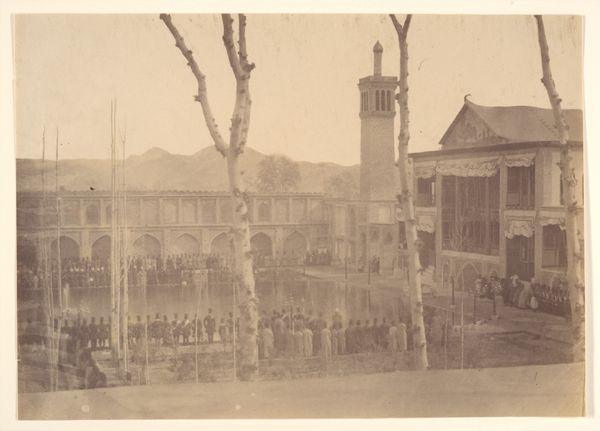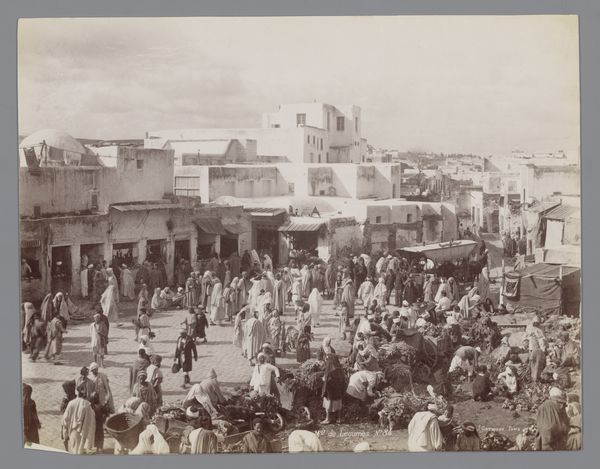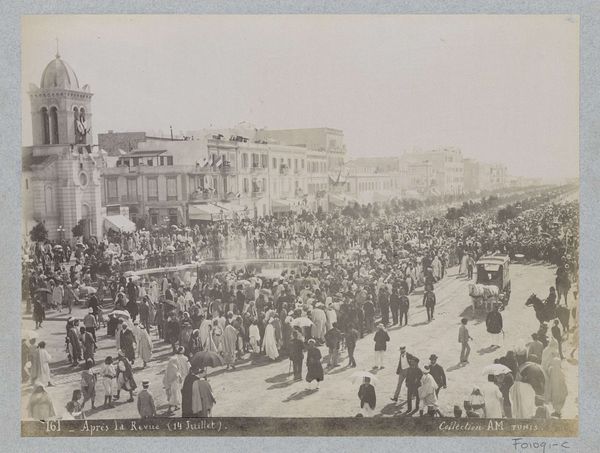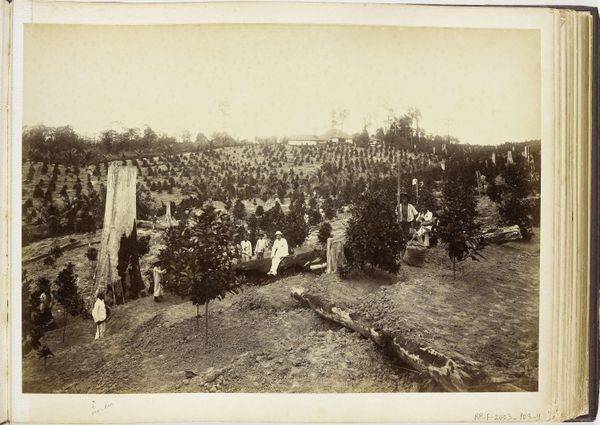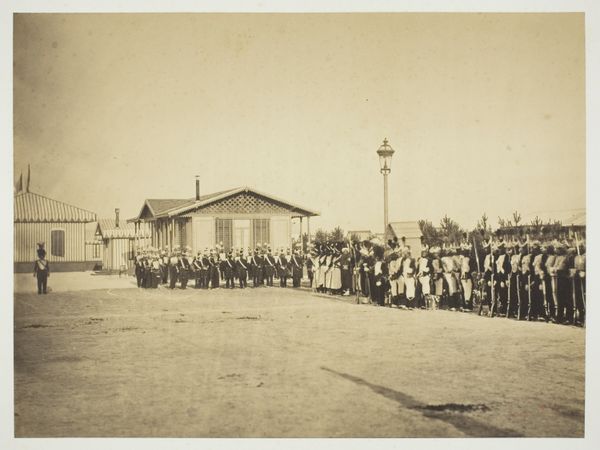
National Congregational Council at Plymouth Rock 1865
0:00
0:00
photography, gelatin-silver-print
#
landscape
#
outdoor photograph
#
outdoor photography
#
photography
#
historical photography
#
gelatin-silver-print
#
men
#
history-painting
Dimensions: Image: 37.5 x 47.6 cm (14 3/4 x 18 3/4 in.) Mount: 45.7 x 55.9 cm (18 x 22 in.)
Copyright: Public Domain
Curator: Let's examine John Adams Whipple's "National Congregational Council at Plymouth Rock" from 1865. The gelatin-silver print offers a glimpse into a specific moment in American history. What stands out to you initially? Editor: It’s fascinating! The sheer number of people gathered – and captured with such clarity given the photographic technology of the time – is striking. It really gives a sense of the scale of this religious council. I'm curious, what can we glean from the material choices and production of this photograph? Curator: Notice how the gelatin-silver print allows for greater detail and tonal range compared to earlier photographic processes. This wasn't simply a recording; it was a carefully constructed image. Consider the socio-economic context: who had access to commissioning and creating such images? Whose stories were deemed important enough to document and circulate? It suggests a particular type of power dynamic. Editor: So, the very act of choosing this method and capturing this event speaks volumes about who was considered important at the time. Do you think that Whipple's other pieces have similarities? Curator: Precisely! The deliberate staging, the selection of the site, Plymouth Rock itself – all these elements are deeply intertwined with the burgeoning narratives of American identity and religious authority. These early photographic technologies democratized image making slightly, while still representing specific, affluent segments of the population. Also, the silver used to create these kinds of photos. Who could access this precious metal? Editor: That’s a great point about the materials themselves representing a certain level of wealth and access. So, this isn't just a photograph of a historical event, but a material artifact reflecting social stratification of the time. Curator: Exactly! It also makes one think, whose narrative are we NOT seeing and how that can have impacts in society. Now I’m really curious to do a comparison with photographs produced by less privileged groups! Editor: Absolutely! Examining the photograph in this light has shifted my understanding. I’m seeing past the surface representation to the deeper social and material realities it embodies.
Comments
No comments
Be the first to comment and join the conversation on the ultimate creative platform.

